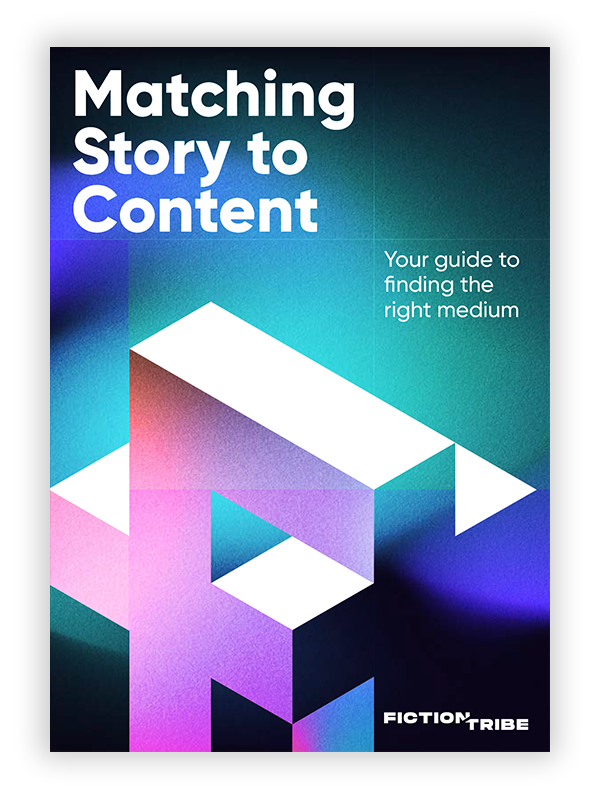Don’t think you need it? Here are three reasons you might.
You’ve heard that good marketing is about telling a story. But that’s like saying the key to painting beautifully is controlling light and color. It’s not incorrect, but that knowledge alone doesn’t make you better at creating it. The hard part, of course, is learning how. Well, to start, you first have to have a familiarity with the tools at your disposal—specifically, what content works best for the type of story you’re trying to tell. And no, this isn’t another post about the buyer’s journey. It’s about what comes before that: building a fundamental understanding of what different assets look like, and what they do best—and being conscious of the potential pitfalls of simply “making it like the last one”
To inform that process, we created Matching Story to Content: Your Guide to Finding the Right Medium. By no means is it an exhaustive source of all content. A compendium like that is theoretical at best, since “content” can literally be anything. But it does revisit some of the most tried and true assets we know and love (and maybe some we’ve come to hate) in an attempt to remove confusion and refocus your content creation and increase its potency.
1. Your whole team should be on the same page (of the same book)
Here’s the problem: We’re not all speaking the same language. Whether it’s an ebook, infographic, or even a homepage, the interpretation of what those actually look like and what they’re supposed to do has become less clear. We’ve become so comfortable with the nomenclature that the functional understanding has taken a back seat. Keep reading to understand why this is a slippery slope.
2. Gain clarity vs. compounding confusion
At Fiction Tribe, we noticed this “language barrier” becoming increasingly problematic. And not just with the more functional asset types—but with less tangible deliverables (like concepts) too. When we took a closer look, we realized that the seeds of confusion were starting before any content was even produced. From the very first conversations, through to scoping and statements of work, everyone had a somewhat different idea of what defined the work. (Long story short: The time to find out you and your client don’t have the same deliverable in mind is not when you’re presenting it.)
3. Keep from building the box before you know what goes in it
It’s not uncommon to reflexively “build another one.” But content types are different for a reason. Editorial is different from data visualization, for example. Maybe you can’t tell your story. You need to show it. The opposite is also true: Data is seldom able to tell a story in isolation. You need a layer of context and implication. Again, different asset types are different for a reason. By getting clear on form and function, you can build the best asset the best way. In short, concentrate on the story you’re trying to tell, then figure out the best content for telling it—not the other way around.
Learn how Fiction Tribe can help you achieve your goals
This is only a start
With trends, technology and audiences constantly changing, content will continue to evolve too. But the fundamental reason people consume content will stay the same: To be engaged and to learn something. It’s our hope this guide can serve as a starting point for finding the best ways to meet those needs.
Download Matching Story to Content: Your Guide to Finding the Right Medium.


